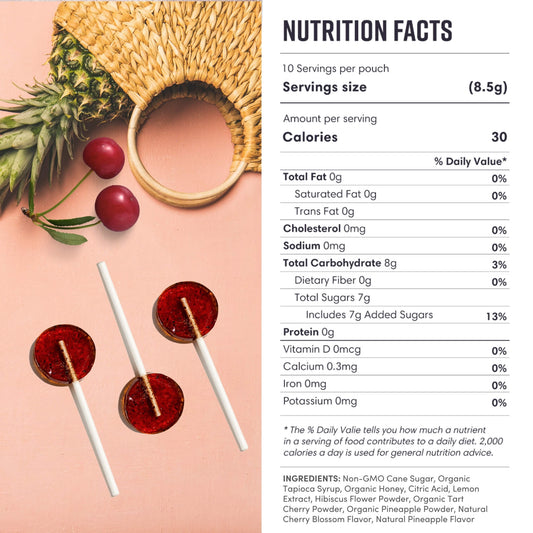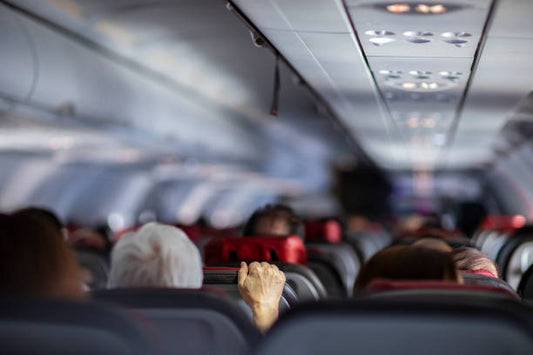Motion sickness is a common affliction that affects many individuals during travel or other forms of movement. This guide aims to delve into the intricacies of motion sickness, its symptoms, and the array of non-drowsy medications available to manage it effectively.
Understanding Motion Sickness
Motion sickness occurs when there is a conflict between the sensory signals that the brain receives from different parts of the body, particularly the inner ear, eyes, and deeper body parts related to balance. This inconsistency can lead to feelings of discomfort, making travel or any kind of motion quite unpleasant. It is a common issue that affects people of all ages, although some individuals may be more susceptible than others. The phenomenon can occur during various forms of transportation, including cars, airplanes, boats, and even amusement park rides, highlighting its widespread impact on our mobility and enjoyment of travel.
Causes of Motion Sickness
The most notable cause of motion sickness is the discordance between visual input and vestibular (balance) signals. For instance, when reading in a moving vehicle, your eyes focus on a stationary object, but your inner ears sense movement. This mismatch confuses the brain and leads to symptoms. Additionally, the brain's ability to process these conflicting signals can be influenced by individual factors such as age, genetic predisposition, and even hormonal changes, which can explain why some people experience motion sickness more frequently than others.
Several factors can exacerbate motion sickness, including:
-
Poor ventilation
-
Stress or anxiety
-
Fatigue
-
A high-fat meal prior to traveling
Certain activities, such as playing video games or using virtual reality devices, can also trigger symptoms due to the intense visual stimulation combined with a lack of physical movement, further complicating the experience for those prone to motion sickness.
Symptoms of Motion Sickness
Common symptoms of motion sickness can range from mild to severe and typically manifest as follows:
-
Nausea and vomiting
-
Dizziness and sweating
-
Headache
-
Increased salivation
Recognizing these symptoms early can help individuals take proactive measures to manage these unpleasant experiences effectively. In addition to the physical symptoms, motion sickness can also lead to psychological effects, such as anxiety about future travel, which can create a cycle of avoidance and increased sensitivity to motion. Understanding the triggers and symptoms can empower individuals to seek appropriate interventions, whether through behavioral strategies, medications, or alternative remedies.
The Need for Non-Drowsy Medicines
Many traditional motion sickness medications, such as antihistamines, often come with sedative effects that can hinder daily activities. Consequently, there has been an increasing demand for non-drowsy alternatives that provide relief without compromising alertness. These alternatives are particularly appealing to those who travel frequently or engage in activities requiring sustained concentration, such as studying or working in high-stakes environments.
Impact of Drowsiness on Daily Activities
Drowsiness can markedly hinder one’s ability to perform routine tasks such as driving, operating machinery, or pursuing work obligations. This danger not only affects personal productivity but also poses risks to personal safety and the safety of others. In addition to the immediate risks associated with impaired motor skills, prolonged drowsiness can lead to chronic fatigue, which can have cascading effects on mental health and overall well-being.
It's essential to stay alert during travel and other activities, and that’s why exploring non-drowsy options can make a big difference in comfort without the unwanted side effects of sedation. Plus, as more people learn about the effects of drowsiness, there’s a wonderful trend toward embracing lifestyle changes and preventive strategies that can help ease motion sickness—without having to depend entirely on medication!
Dangers of Drowsy Driving
Driving while drowsy is akin to driving under the influence of alcohol. Studies indicate that drowsiness impairs reaction time, judgment, and awareness, increasing the likelihood of accidents. Therefore, the critical nature of non-drowsy motion sickness remedies cannot be overstated. The National Highway Traffic Safety Administration (NHTSA) has reported that drowsy driving contributes to thousands of crashes each year, underscoring the urgent need for effective solutions that allow drivers to remain alert.
By opting for non-drowsy solutions, individuals can strive to maintain their focus and alertness, thereby ensuring safer travel experiences. Furthermore, the development of these alternatives has sparked interest in innovative approaches, such as natural supplements and lifestyle adjustments, which can complement traditional treatments. As research continues to evolve, the future of non-drowsy medications holds promise for enhancing not just travel comfort but overall quality of life for those prone to motion sickness.
Overview of Non-Drowsy Motion Sickness Medicines
Non-drowsy motion sickness medications work by targeting the central nervous system and reducing the mismatch in sensory signals without the sedative effects that often accompany traditional medications. This makes them particularly appealing to individuals who need to maintain alertness during travel, whether for work or leisure. The ability to combat nausea and dizziness without the foggy side effects of older antihistamines allows travelers to enjoy their journeys more fully.
How Non-Drowsy Medicines Work
Most non-drowsy motion sickness medications act as antagonists to histamine and other neurochemicals involved in the regulation of balance and nausea. By blocking these signals, they effectively alleviate the symptoms associated with motion sickness. The mechanism of action often involves the vestibular system, which plays a crucial role in maintaining balance. When the brain receives conflicting messages from the inner ear, eyes, and deeper body parts, it can lead to feelings of nausea; these medications help to harmonize those signals.
It is essential to understand that these medications generally work best when taken before exposure to motion. This proactive approach allows the body to adjust and can significantly enhance the effectiveness of the treatment. Additionally, some individuals may find that combining these medications with behavioral strategies, such as focusing on a stable horizon or engaging in deep breathing exercises, can further mitigate symptoms.
Types of Non-Drowsy Motion Sickness Medicines
There are several categories of non-drowsy medications available:
-
Meclizine: This antihistamine is commonly used to prevent and treat nausea and dizziness caused by motion sickness. It is particularly favored for its long-lasting effects, which can be beneficial for extended travel.
-
Dimenhydrinate: Often marketed under various brand names, this medication can be effective for mild motion sickness symptoms. It is important to note that while it is less sedating than traditional antihistamines, some individuals may still experience slight drowsiness.
-
Ginger supplements: Studies have suggested that ginger can help reduce nausea, making it a natural alternative for some individuals. Ginger can be consumed in various forms, such as capsules, tea, or even candied pieces, providing flexibility for those who prefer a holistic approach.
-
Scopolamine patches: These prescription patches are placed behind the ear and can provide continuous relief for prolonged travel. They are particularly useful for those who may forget to take oral medications during long journeys.
Alongside these options, exciting new formulations and combinations are being researched to boost effectiveness while keeping side effects to a minimum. For example, some studies are looking into acupressure bands, which gently apply pressure to specific points on the wrist, as a supportive way to complement traditional medications. This rising interest in non-drug approaches highlights a wonderful trend toward personalized medicine, allowing individuals to select the best method that fits their unique needs and preferences.
Choosing the Right Non-Drowsy Medicine
Choosing a non-drowsy motion sickness medication can feel a bit overwhelming, but don’t worry! It’s really important to think about different factors to find what works best for you.
Factors to Consider
Some important considerations include:
-
Your specific symptoms
-
The duration of your travel
-
Any pre-existing health conditions
-
Potential interactions with other medications
Understanding these factors will assist you in identifying the most suitable medication and dosage. For instance, if you experience nausea and dizziness, you may benefit from a medication that specifically targets those symptoms. Additionally, the length of your journey can influence your choice; shorter trips may require a different approach than long-haul travel, where sustained relief is crucial. Furthermore, being aware of any health conditions, such as asthma or heart issues, can help you avoid medications that may exacerbate those conditions.
Consulting with a Healthcare Professional
It is always recommended that individuals consult with a healthcare professional before initiating treatment. A professional can offer personalized guidance based on individual health history, current medications, and specific needs. They may also provide insights into alternative therapies, such as acupressure bands or ginger supplements, which can be effective for some individuals without the side effects associated with traditional medications.
By collaborating with a healthcare provider, individuals can make informed decisions and choose medications that align with their health and lifestyle. This partnership is especially beneficial for those who may be taking multiple medications, as a healthcare professional can help navigate potential drug interactions and ensure that the chosen remedy complements existing treatments. Moreover, they can assist in monitoring your response to the medication, making adjustments as necessary to optimize your travel experience.
Proper Usage of Non-Drowsy Motion Sickness Medicines
To maximize the efficacy of non-drowsy motion sickness medications, proper usage is crucial.
Dosage and Administration
Dosage can vary based on the specific medication and individual health. It is vital to follow the instructions on the packaging or those provided by your healthcare provider for optimal results.
It's usually best to take medications 30 to 60 minutes before your trip. This gives your body enough time to absorb the medication and start easing any symptoms you might feel. Also, try to steer clear of heavy meals or alcohol right around the time you take your medication since they can affect how well it works. And don’t forget to keep drinking water! Staying hydrated can really help reduce feelings of nausea while traveling.
Possible Side Effects and Interactions
While non-drowsy medications are generally better tolerated, some individuals may still experience side effects.
Common side effects may include:
-
Dry mouth
-
Dizziness
-
Headache
It is also important to be aware of potential interactions with other medications, particularly those that may exacerbate side effects or reduce therapeutic effectiveness. Always ensure open communication with your healthcare provider regarding all medications you are taking. For instance, some antihistamines, which are commonly found in cold and allergy medications, can amplify the sedative effects of other drugs, even if they are labeled as non-drowsy. Therefore, a thorough review of your medication list with a healthcare professional can help prevent any adverse reactions.
Furthermore, individual factors such as age, weight, and pre-existing health conditions can influence how one reacts to these medications. For example, older adults may have a heightened sensitivity to side effects, making it essential for them to consult their healthcare provider about the safest options available. Natural and effective options such as those from Momma Bear Organics are great alternatives. Understanding these nuances can empower travelers to make informed decisions and tailor their approach to managing motion sickness effectively. By taking these precautions, individuals can enhance their travel experiences and enjoy their journeys with greater peace of mind.










